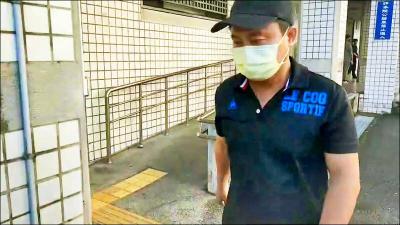Taipei’s Mass Rapid Transit (MRT) system yesterday unveiled a new coding system for its metro lines and stations aimed at helping foreigners to navigate the system more easily.
The new system, which was announced by the Taipei City Government in November last year and underwent public consultation, introduces a color-coded system for each line to replace the number-coded system in use since November 2014.
Line 1 (Wenhu Line), the first line that entered service, is to be officially called the “Brown Line,” as it has been known throughout the MRT system’s 20-year history. The other four lines are also to be renamed in the same manner.
An alphanumeric code is to be assigned to each station, which currently is only distinguished by the station’s name in Chinese and English, MRT operator Taipei Rapid Transit Corp (TRTC) said.
Taipei Mayor Ko Wen-je (柯文哲) and TRTC president Yen Pang-chieh (顏邦傑) pledged to introduce a coding system for the stations after Democratic Progressive Party Taipei City Councilor Lee Chien-chang (李建昌) said during a council session in November last year that foreigners are often confused by the station names, since many of them are romanizations of Chinese names.
Lee cited the metro systems in Seoul and Mexico as examples of how station codes makes it easier for foreigners to find their way around.
According to the new system, New Taipei City’s Sindian District (新店), the terminal station on the “Green Line” (Songshan-Xindian Line), is to be coded “G01,” a combination of a prefix to indicate the line color and a number.
Two codes are to be assigned to stations where two lines meet, such as Taipei Main Station, which will be coded “R10” and “BL12,” as the “Red Line” (Tamsui-Xinyi Line) and the “Blue Line” (Bannan Line) intersect.
The codes for the stations on the “Orange Line” (Zhonghe-Xinlu Line are to have the prefix “O,” while those on the Wenhu Line (Brown) will have the prefix “BR.”
The number of each station would increase from south to north and from west to east, TRTC said.
Once the new coding system is approved by Ko, TRTC said it plans to complete updating the maps and signage in the stations, which will cost NT$30 million (US$926,268), before the Summer Universiade opens on Aug. 19 next year.
The new coding system is the same as the one adopted by Kaohsiung’s metro system since it began operations in 2008.
It is also used for all metro and tram lines in Taiwan during planning stages, when no station names have been designated.

South Korean K-pop girl group Blackpink are to make Kaohsiung the first stop on their Asia tour when they perform at Kaohsiung National Stadium on Oct. 18 and 19, the event organizer said yesterday. The upcoming performances will also make Blackpink the first girl group ever to perform twice at the stadium. It will be the group’s third visit to Taiwan to stage a concert. The last time Blackpink held a concert in the city was in March 2023. Their first concert in Taiwan was on March 3, 2019, at NTSU Arena (Linkou Arena). The group’s 2022-2023 “Born Pink” tour set a

CPBL players, cheerleaders and officials pose at a news conference in Taipei yesterday announcing the upcoming All-Star Game. This year’s CPBL All-Star Weekend is to be held at the Taipei Dome on July 19 and 20.

The Taiwan High Court yesterday upheld a lower court’s decision that ruled in favor of former president Tsai Ing-wen (蔡英文) regarding the legitimacy of her doctoral degree. The issue surrounding Tsai’s academic credentials was raised by former political talk show host Dennis Peng (彭文正) in a Facebook post in June 2019, when Tsai was seeking re-election. Peng has repeatedly accused Tsai of never completing her doctoral dissertation to get a doctoral degree in law from the London School of Economics and Political Science (LSE) in 1984. He subsequently filed a declaratory action charging that

The Hualien Branch of the High Court today sentenced the main suspect in the 2021 fatal derailment of the Taroko Express to 12 years and six months in jail in the second trial of the suspect for his role in Taiwan’s deadliest train crash. Lee Yi-hsiang (李義祥), the driver of a crane truck that fell onto the tracks and which the the Taiwan Railways Administration's (TRA) train crashed into in an accident that killed 49 people and injured 200, was sentenced to seven years and 10 months in the first trial by the Hualien District Court in 2022. Hoa Van Hao, a